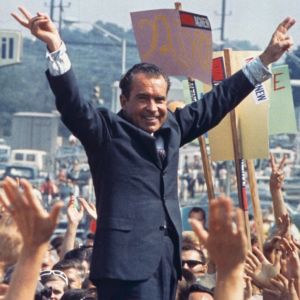On August 15, 1971, President Richard Nixon decreed the U.S. dollar would no longer be redeemable for the gold owed, even to foreign governments. This bad decision was a desperate attempt to avoid the consequences of previous bad decisions.
Nixon decided to end gold convertibility. He claimed it was just temporary, but his decree was a dishonorable default on the U.S. government’s obligations.
Here’s a brief history of the prior bad decisions that lead to Nixon’s really bad decision.
Nixon’s action came after a long series of bad policy decisions going back to 1792, when the Coinage Act fixed the price of silver to gold giving unearned purchasing power to holders of silver.
Next, in 1834, the law changed, transferring wealth from silver owners to gold owners. The former tended to be farmers and craftsmen who held silver. The latter tended to be the wealthy, who deposited gold in banks
In 1861, the government declared paper currency was not redeemable for metal. In 1862, the government issued the later infamous “Greenbacks,” and in 1863 banks with federal charters could issue irredeemable notes. Declared legal tender, creditors had to either accept them or forego payment.
After the Civil War, the government resumed payment in specie, but created more mischief. The Coinage Act of 1873 effectively demonetized silver. Farmers and craftsmen incurred further losses and now had to pay debts in gold.
The “Crime of ’73” was still in people’s minds in the election of 1896. William Jennings Bryan ran against William McKinley. Bryan wanted a return to the bimetallic system. McKinley was for the gold standard. McKinley won.
But Bryan resurfaced in the Woodrow Wilson administration and was instrumental in the passage of the Federal Reserve Act in 1913 granting the government a monopoly on currency issuance.
The Federal Reserve (the Fed) was purportedly created to stabilize the economy. The actual result was that the economy was destabilized. The interest rate first rose, then fell. The Fed, being the lender of last resort, tempted the banks to speculate with this moral hazard –suppressing interest rates enabled them with cheaper credit.
To stave off bank runs, President Franklin Roosevelt imposed another bad decision. He declared it a crime to own gold, voiding all contract clauses providing for payment in gold (except to foreign governments). The most conservative savers were forced to buy government bonds.
At the end of World War II, the Bretton Woods System was another bad policy move. Other countries had to treat the U.S. dollar as if it were gold. Everyone assumed—U.S. government officials most of all—that this system was in the interests of the U.S. In fact, it was architected by Harry Dexter White, who was later discovered to be a tool of the Soviet Union.
Indeed, the U.S. abused its “exorbitant privilege”, and some countries began to redeem their dollars for gold. The gold flowing out of the U.S. Treasury accelerated. Nixon reacted to this crisis by ending the redeemability of the dollar. He may have stopped the gold withdrawals, but he accelerated government and private debt.
Today, central planners are doubling down, flailing about to prevent debt collapse. Our monetary masters are buying assets—trillions and trillions worth of assets. They think that this will somehow shake off the malaise that has persisted since the financial crisis of 2008.
And the next crisis may already be brewing. While the Fed is buying Treasury bonds from the banks, it is simultaneously engaging in reverse repo transactions. In reverse repo, the Fed borrows cash from the banks, giving them Treasury bonds as collateral. Got that? The Fed buys bonds from the banks, then turns around and temporarily sells the bond back to them (reverse repo is a short-term contract).
Instead of the Fed’s central planning, a gold standard is simpler and better. We the people should have the right to hold gold coins or bank deposits. This choice is key to setting interest rates in a free market.

